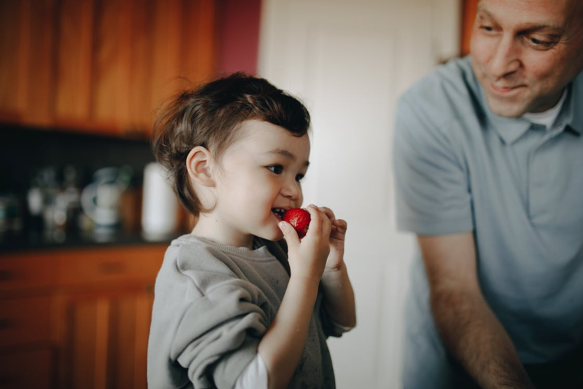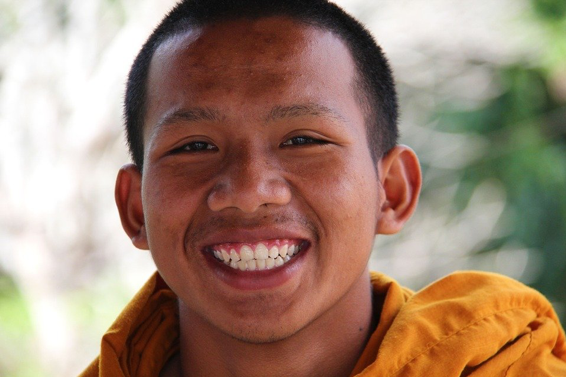Differences between Children’s Teeth & Adult Teeth
Ever wonder why humans have two sets of teeth? That’s because of the differences between children’s and adult teeth. The first set of teeth, known as milk teeth, are temporary and begin to emerge around six months of age. By the time children are around three years old, they will have all their milk teeth. These teeth start falling out around the age of 5 or 6 to make way for adult teeth.
Adults have 32 teeth, while babies have 20, but that’s not the only difference. There are many other differences between a child’s and an adult’s teeth. It is important to know the difference because while both need proper care, the type of dental care differs. Mentioned below are all the differences you will come across between children and adult teeth.

(Source)
The Main Differences between Children and Adult Teeth
Mentioned below are a few differences between children and adult teeth:
The Level of Strength
For starters, adult teeth are stronger than milk teeth. Permanent teeth usually have a thick layer of enamel, which makes them less prone to dental issues such as cavities and tooth decay. Children have softer teeth with thinner enamel. Consequently, their teeth are highly susceptible to damage by bacteria, which can cause cavities and tooth decay.
The Number of Teeth
Another main difference between children and adult teeth is the number of teeth. Children usually only have 20 teeth, and these start to erupt around six months of age. On the other hand, adults have a total of 32 permanent teeth.
20 Teeth That Children Have:
- 4 Second Molars
- 4 First Molars
- 4 Lateral Incisors
- 4 Central Incisors
- For Cuspids
32 Permanent Teeth That Adults Have:
- 4 Central Incisors
- 4 Lateral Incisors
- 4 third Molars
- 4 Second Molars
- 4 first Molars
- 4 first bicuspids
- 4 second bicuspids
- 4 Cuspids
The Color
You will always find baby teeth whiter and brighter compared to adults with permanent teeth. You will only be able to notice the color difference in children’s teeth once their baby teeth fall out. Sometimes, the color depends on the way you brush and maintain your teeth. But if you take a close look at a child’s teeth, you will notice a white milky texture.
The Shape and Size
Children’s teeth start with incisors that have flat edges and are smaller in size compared to adult teeth. You will notice a child’s tooth is more square-shaped. While adult incisors have more rounded biting edges and also have three ridges right on the biting edge. The ridges are also known as mamelons, and while the teeth erupt, it becomes easier for them to break through the gums. Adults with molars have deeper valleys and grooves along the surface where you chew. Meanwhile, children’s teeth don’t have noticeable grooves and are very shallow instead.
Differences Children’s Teeth & Adult Teeth: Purposes of Each
Children’s teeth have a different purpose compared to those of adults. Both types of teeth share similar functions when it comes to eating food and trying to speak. The purpose of baby teeth is to maintain the spacing of the jaw for your adult teeth to have more room to erupt into the right position. Consequently, children’s teeth gradually disintegrate, and the teeth fall out. The main purpose of adult teeth is to keep the mouth functioning properly. They can do so because of their increased strength. Adults have to take extra care of their teeth to improve their longevity.

(Source)
What Are the Other Purpose of Children’s Primary Teeth?
Though primary teeth aren’t permanent, it is still important to take care of them. Teaching young children to look after their teeth helps them develop better brushing and flossing habits that they will continue as they grow older.
Whenever a child eats, it causes harm to the gum, so by protecting your primary teeth, you are also preventing certain gum diseases and tooth decay. Children’s teeth are at a lot of risk as they are not permanent. Hence, you have to do everything you can to protect them till they all fall out and permanent teeth start growing.
Children’s teeth also act as spacers until the permanent teeth are ready to erupt. Losing baby teeth before the eruption of a permanent tooth could lead to many spatial problems. You will struggle with this once adult teeth develop. The important thing to remember is that just because children’s teeth aren’t permanent doesn’t mean they’re not important. Children’s teeth are more like base starters for permanent teeth.
Differences Children’s Teeth & Adult Teeth: Final Words
Now that you are aware of the difference between a child’s teeth and adult teeth, you’re better equipped to take care of them by keeping them safe and clean.
For the best orthodontic consultation, get in touch with NYC Dental Orthodontics in New York City.
NYC Dental Orthodontics
20 E 46th St Rm 1301
New York, NY 10017
(646) 760-8028